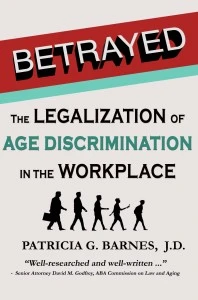Note: News outlets reported July 21, 2016 that Ailes will receive a $40 million buyout from Fox and a new job as an “advisor” to the network.
What should the penalty be for a manager who allegedly abused his power for decades by sexually harassing female subordinates?
Disgrace? Dismissal? Banishment?
Well, that does not appear to be what is happening in the case of Roger Ailes, the chief executive officer of Fox News who allegedly sexually harassed female subordinates since the 1960s.
According to the Drudge Report, 21st Century Fox, the corporate parent of Fox News, is negotiating an exit package with Ailes that includes a $40 million buyout. Other outlets report Fox wants to keep Ailes on the payroll as a consultant. In other words, the consequences of Ailes’ allegedly abusive behavior may consist of a fat check and a change of job title.
One reason that sexual harassment remains epidemic in the American workplace is the lack of any serious consequences for the abuser. Victims of sexual harassment lose their dignity, sense of trust and peace of mind. Many lose their jobs and financial security. In the rare instance that a sexual harasser is held to account, the consequences range from a pat on the hand to a quiet suggestion that it is time to move on.
Women in the workplace are well aware they lack any real protection from sexual harassment and this knowledge understandably deters them from reporting the problem.
Ailes woes began a few weeks ago when Gretchen Carlson, a former news anchor, filed a lawsuit claiming that Ailes fired her because she refused to have a sexual relationship with him. Ailes, 76, vigorously denied the accusation. Some observers (including former co-workers) dismissed Carlson’s complaint as a parting shot by an aging beauty queen whose afternoon TV show suffered from poor ratings. (Fox is presently trying to move Carlson’s lawsuit out of federal court and the public eye into a closed-door arbitration proceedings.)
The problem for Ailes arose because other women began complaining about his allegedly abusive behavior. Carlson’s attorney, Nancy Erika Smith, said that at least a dozen women contacted her firm after Carlson’s lawsuit was filed complaining of similar harassment by Ailes. The final blow appears to be a story by New York Magazine stating that Fox News star Megyn Kelly told a law firm hired to investigate Carlson’s complaint that Ailes had sexually harassed her a decade ago.
Fox had no choice but to do something. When an employer receives a complaint that a manager is sexually harassing a subordinate, the employer is on notice and must act to prevent future harm (including retaliation) or it will risk serious damages. However, the law does not require the employer to actually penalize the harasser. So Fox’s game plan appears to be this – remove Ailes from his supervisory position, while keeping him happy and on the job.




 han a decade of ignoring rampant and blatant age discrimination in the tech industry (and everywhere else), the issue appears has surfaced on the EEOC’s radar screen. But it is not seen as an overly-ripe target for enforcement of older workers civil rights. Rather, it is couched as an “innovation opportunity.”
han a decade of ignoring rampant and blatant age discrimination in the tech industry (and everywhere else), the issue appears has surfaced on the EEOC’s radar screen. But it is not seen as an overly-ripe target for enforcement of older workers civil rights. Rather, it is couched as an “innovation opportunity.”


